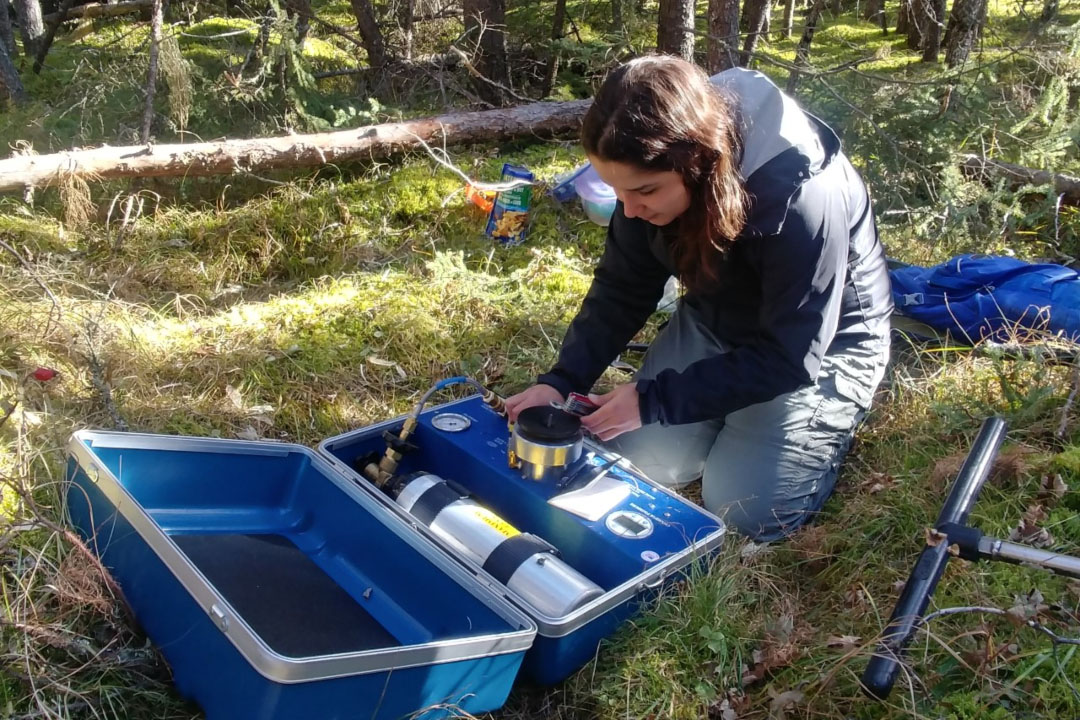
USask research aims to identify how ‘thirsty’ forests affect water availability
Understanding when, how and where plants get water has major effects on farming and forestry in Canada
By BROOKE KLEIBOERUniversity of Saskatchewan (USask) graduate Dr. Magali Nehemy (PhD) and her research team investigated how plants use water — where they get it, when they need it and how these processes impact overall water availability.
Understanding the way plants use water can assist farmers to work efficiently and productively. Irrigation schedules and fertilizer applications depend heavily on the amount of water available in the surrounding soil and how efficiently plants can use it.
Most water used in agriculture and urban areas comes from sources originating in forest landscapes. Rainfall is usually first consumed by trees in large forests, and then proceeds down through soil and water pathways to other environments.
Nehemy’s PhD research investigated how and when trees consume water — a process called transpiration — and worked to identify the age of the available water when it is consumed. The project also analyzed how water-consuming forests impact the water supply available to other plants.
“Changes in forest composition because of logging, forest fires, or insect outbreaks, may affect water availability downstream, and understanding the source and origin of this transpired water improves our ability to manage these complex systems,” said Nehemy.
Nehemy and her research team analyzed the water uptake of trees in both northern Saskatchewan and Lausanne, Switzerland. To determine how water was used, the “thirst level” of the tree, water levels in the soil and changes in climatic conditions were closely monitored.
The research revealed that the status of a plant — how thirsty it is at any given time — has major effects on the type of water sources it uses from the soil.
Water sources have unique molecular signatures that can be used to identify where the water comes from. Hydrogen and oxygen isotopes can be used as markers to determine if water came from shallow versus deep sources, and its seasonal origin, such as a winter snowmelt versus a summer rainfall.
“Recent rainfalls can be transpired very quickly, or snowmelt may be used rapidly by trees in the boreal forest, whereas it may take many days or weeks for water to travel down the soil profile, and reach groundwater or streams,” said Nehemy.
If water is mostly used by trees in forest-type environments, this could affect the availability of water for agricultural or urban use. This finding is particularly relevant as water resources become scarcer and drought conditions become increasingly common.
The work is the first of its kind in that it identifies that trees constantly change where they are sourcing water from, causing a ripple effect of impact to other vegetation.
“This research challenges the notion that most people have about the nature of how water flows in soil and reveals interesting details about how vegetation interrupts and alters this flow in space and time,” said Nehemy.
“The most informed understanding of plant water source and origins is critical to measuring and predicting the impact of forests on the availability and quality of water.”
Supervised by Drs. Jeffrey McDonnell (PhD) and Colin Laroque (PhD) from USask’s Global Institute for Water Security, Nehemy successfully defended her dissertation and earned her doctorate degree in August 2021. She is now transitioning to a post-doctoral program at USask with McDonnell to further her research on water uptake in trees and plants.
Nehemy emphasizes that “there are still many unknowns related to how patterns in tree water use affect water availability, and how it changes across different forest environments.”
Her post-doctoral research focused on the Amazon Forest and hillslopes in New Zealand is designed to answer questions such as what water sources sustain trees and plants in the dry season and after rainfall events.
The research was funded by the Natural Sciences and Engineering Research Council of Canada CREATE for Water Security grant program and the American Geophysical Union Horton Research Grant award.
Article re-posted on .
View original article.
